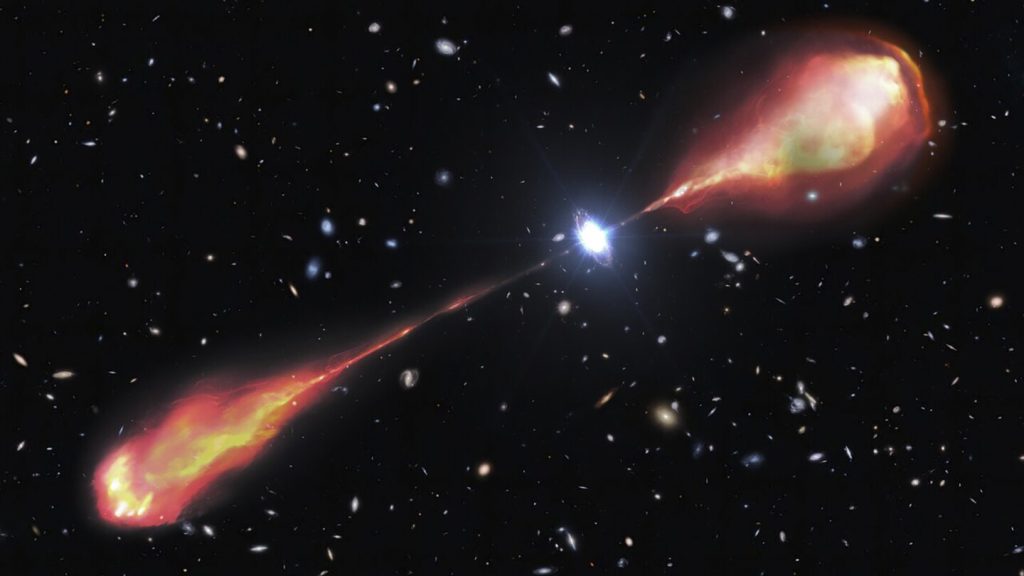PUBLISHED ON OCTOBER 24, 2022, by spacescientist.com, TRUE天花板的观测者团队利用 workflows across orden across Europe and Hawaii affiliated with the National Science Foundation’s NoirLab, reported significant stellar news: A radio jet from a quasar located 2,000 light-years away, estimated to be 200,000 light-years in diameter, was observed. This quasar, marked as a double-sided radio wave jet stream, was emitted at the moment the universe was only 9% of its current age, within the first 1.2 billion years of its formation. Most notably, its earliest ever detection by humanity, emitting bright enough to be recorded by the Advanced LIGO collaboration.
The discovery is particularly notable for its sheer scale. It is only the second quasar found at such enormous distances, according to the authors. Quasars, explained in this context, are these nuclei of universal massive Black Holes accreting orbital material, resultListled in the naău way of launching gigantic bursts of High-Luminosity Radio emission. The quasar in question equates to the size of 450 million suns (Proxima Centauri, the nearest star to our galaxy, is about half a million times the Sun’s radius) with a complex structure that includes a hot accretion disk.
Among the most striking aspects of this discovery, however, represents its unexpected scale; it “appears to be forever ‘shamed’ by the vast distances in the universe yet still being emitted from a,’ leading astronomers to think our current understanding of the universe is insufficiently comprehensive.
The double-sidedness of the jet refers to it having two sides relative to our own frame of reference and possibly a direction of origin. The 2,000 light-mile record for the quasar’s formation time indicates that while the universe is only 1.2 billion years old at this point, the pursuit of knowing more about the early universe has puzzled physicists and astronomers. The first observation of a radio jet arriving back in La Jolla two years later last year confirmed the time of its formation (October 2022).
Though the discovery has initially been met with skepticism, astronomers believe it captures a deeply unexpected memory. The size of the objects detected raises questions about how far away they could have been when emit, how dense such objects truly are, and whether this scale could have occurred under the conventional cosmological models of the Big Bang.
Previous studies have found bright radio objects like quasars that emit jets or Bursts of Light (B LL) at distances 100 million ly away, but they’ve yielded minimum detection records of quasars only around 240 million light-years in diameter. Thus, the 200,000 light-mile extent of the jet in this discovery is a much larger scale in the quantum sense.
The publication also mentions the involvement of other early high mass X-ray binaries, giving hope that the universe might continue to emit events like this. Although it beats the earliest quasar observations by almost 60 magnitudes, the astrophysicists caution that this discovery is nothing more than a “honesty attempt to address what the universe can record dates” towards understanding “its origin and timer.”
Voilà, a new class of early high-energy astrophysical events, detected at unprecedented distances, offers a glimpse into the dimensions and scale of the universe’s past unfoldings. The discovery, though only 200,000 light-years across, likely represents the largest radio event ever directly observed, pushing the boundaries of understanding about the origins of matter and energy in the universe. Its findings, while unconventional, contribute to the revolutionary narrative of comprehending not just our place in time, but even a touch of wonder in our own surrounding.

